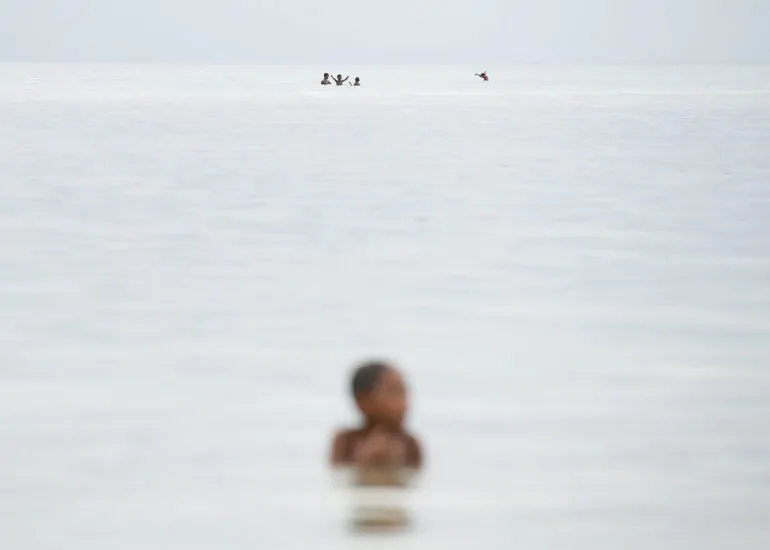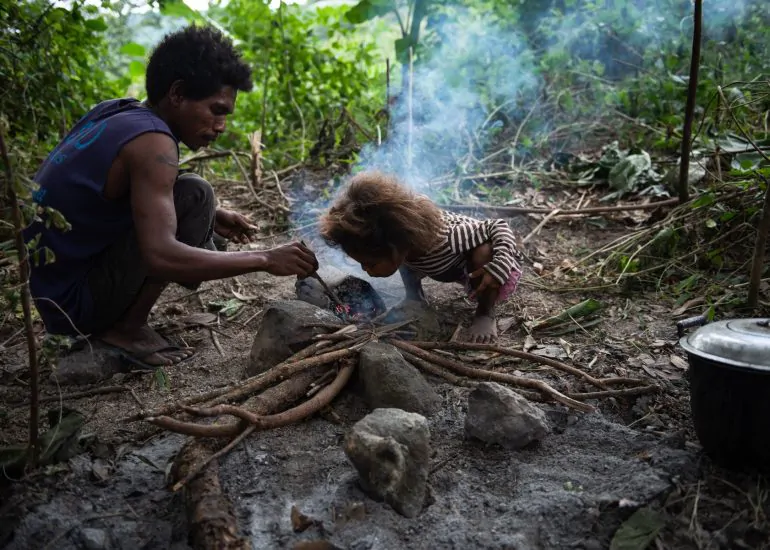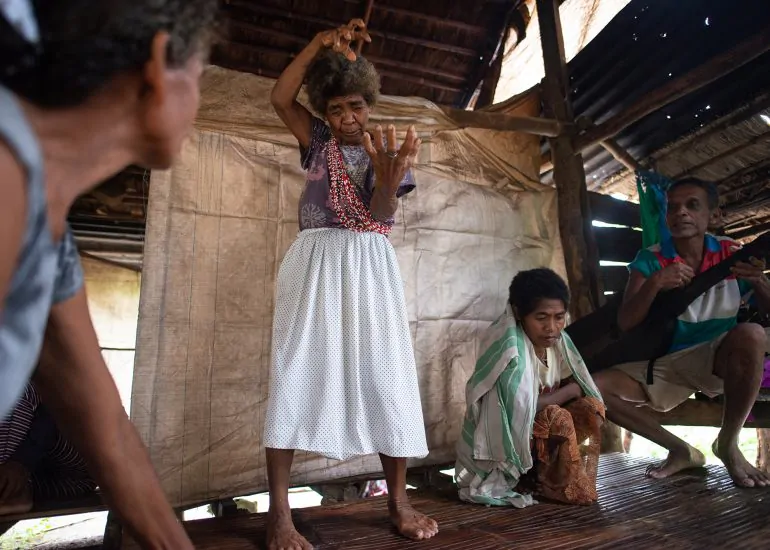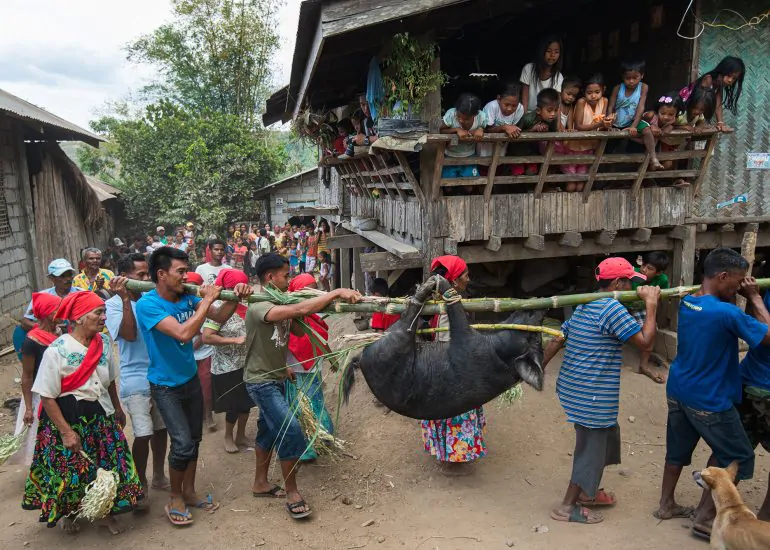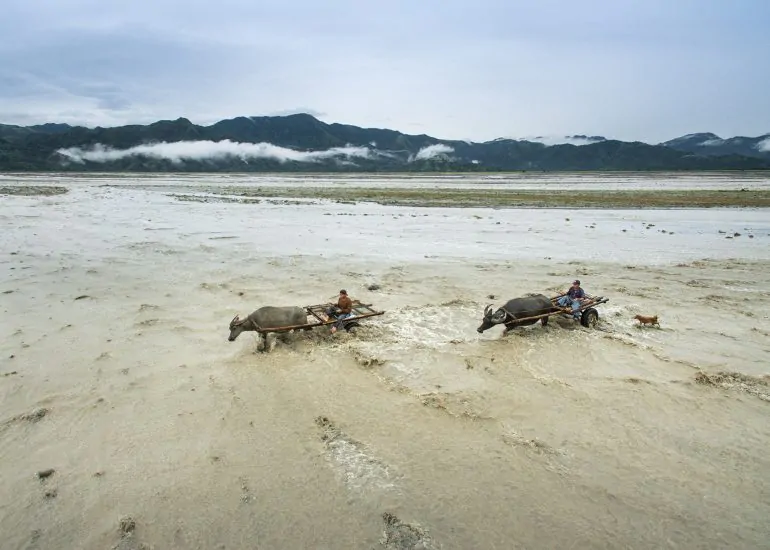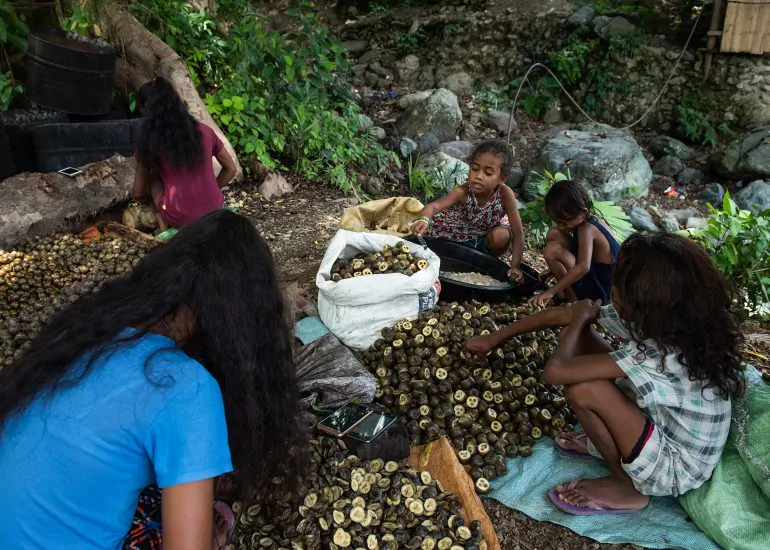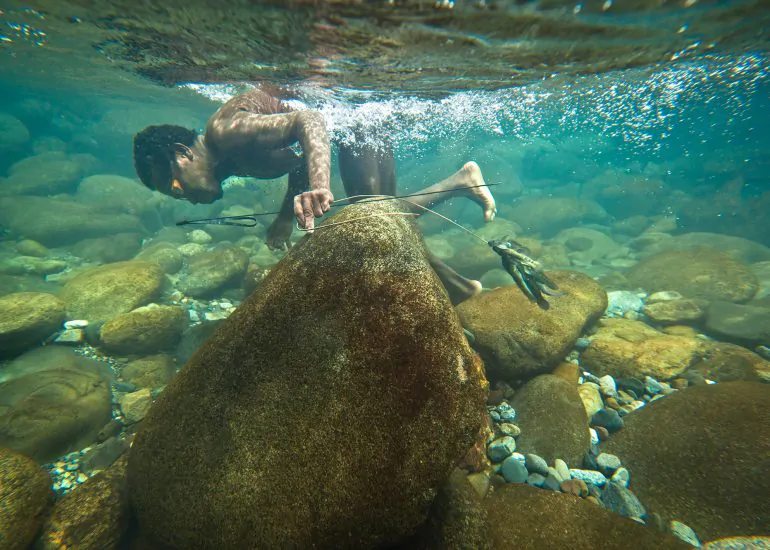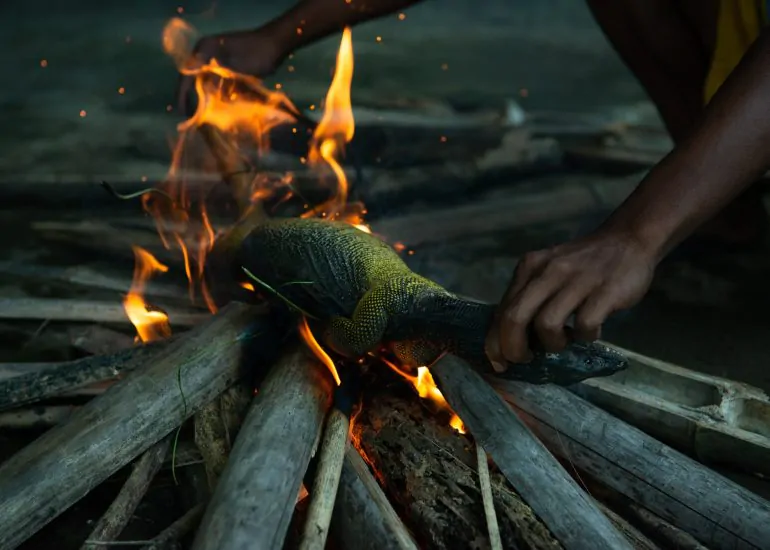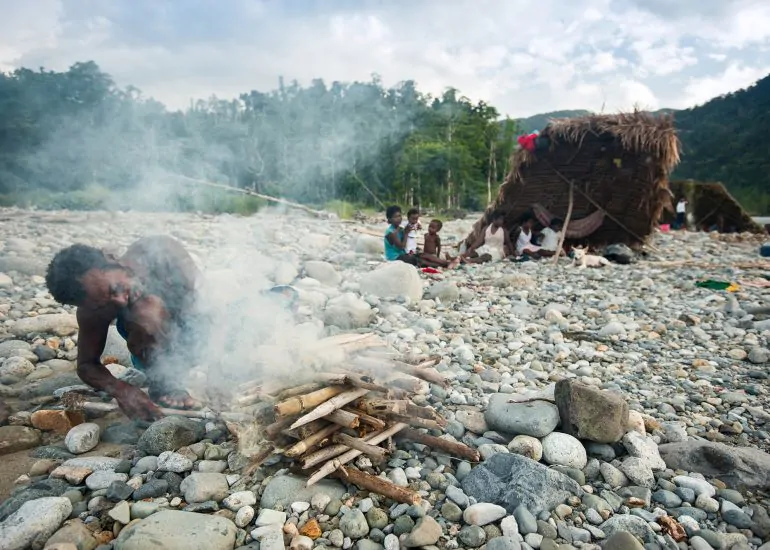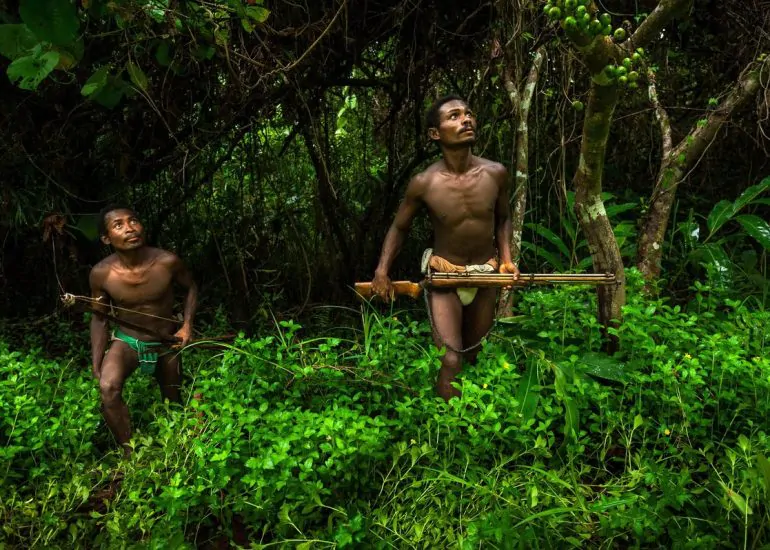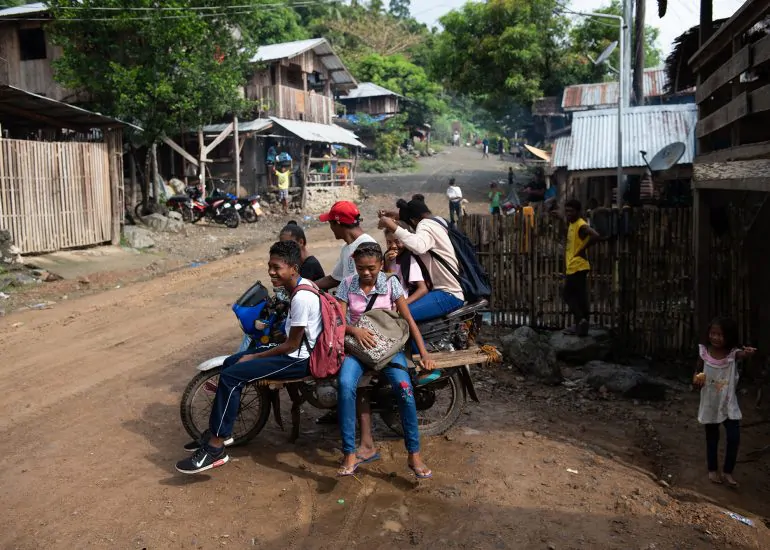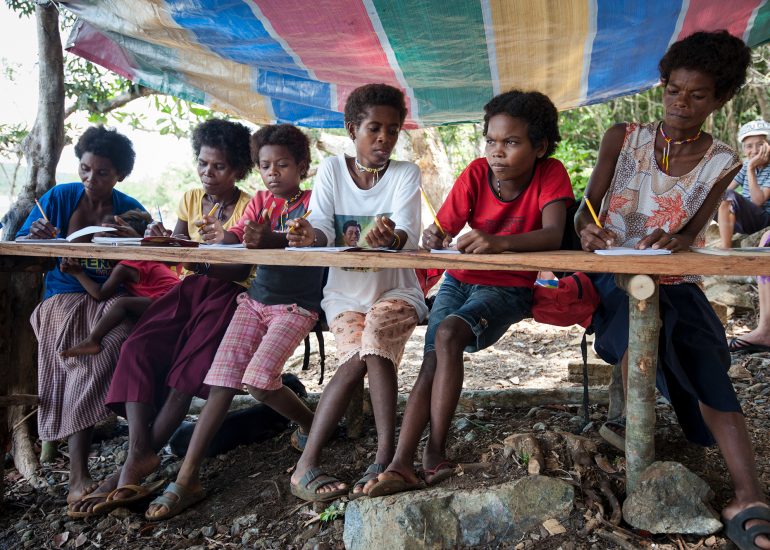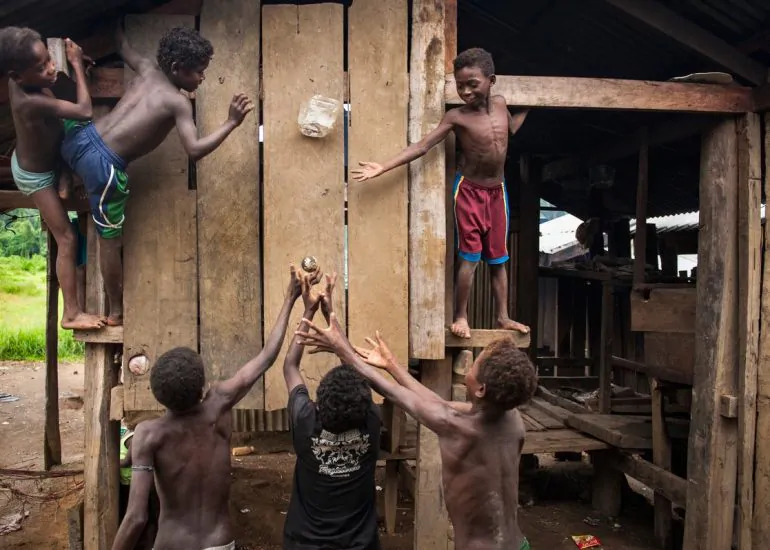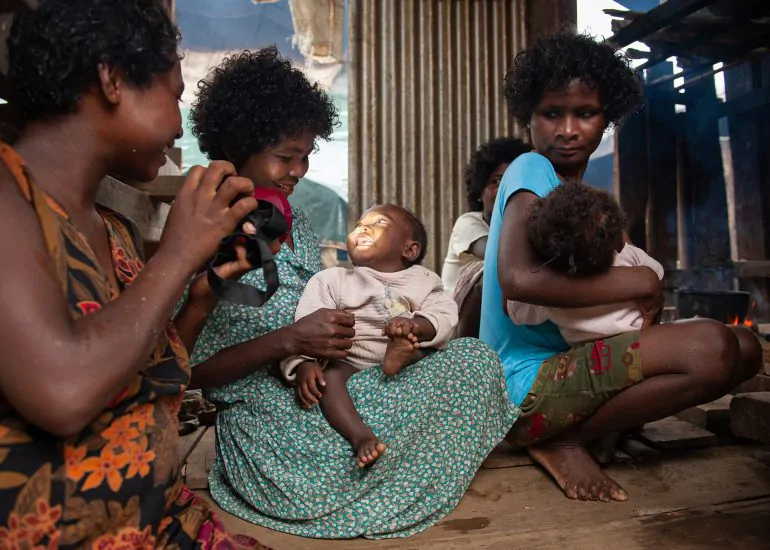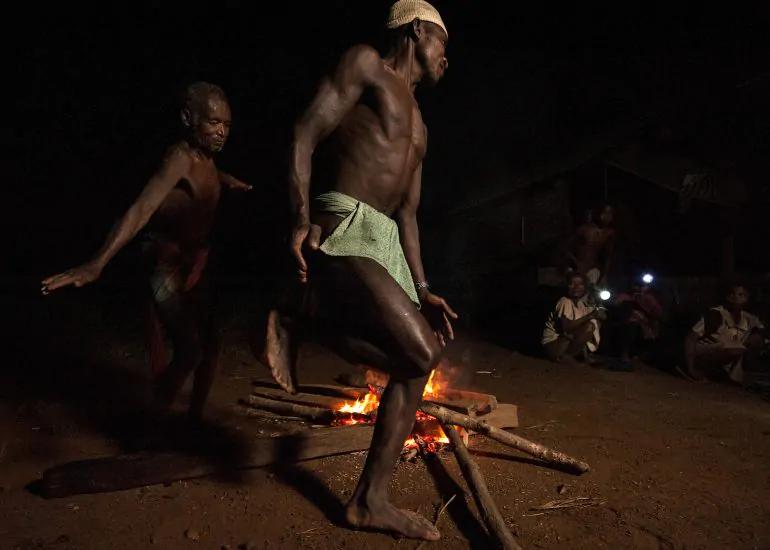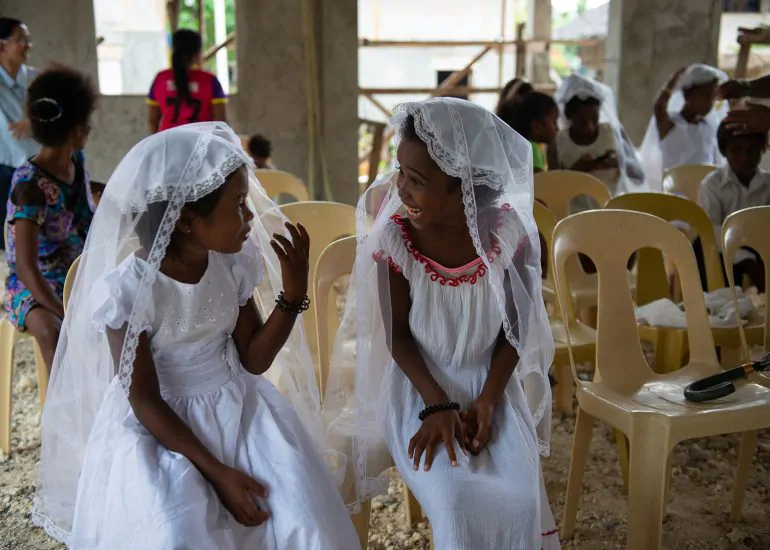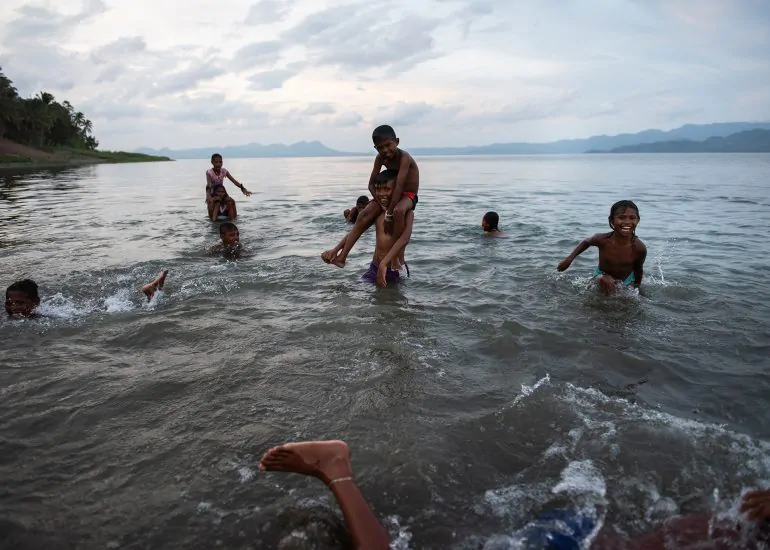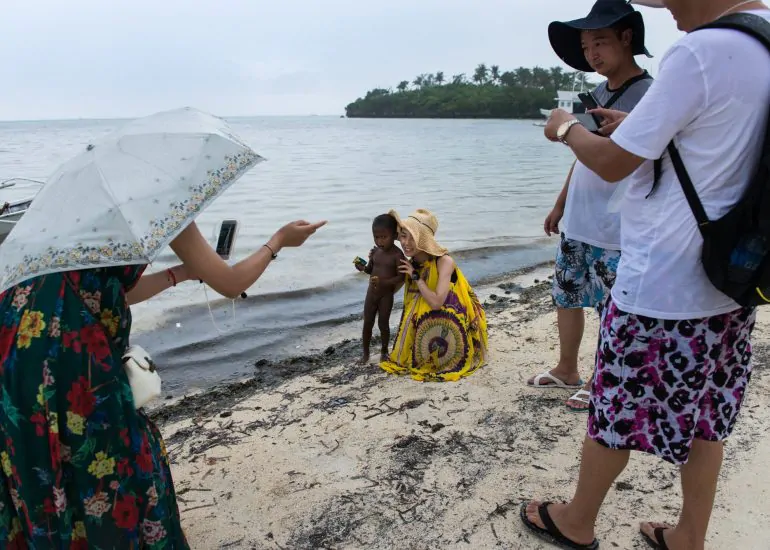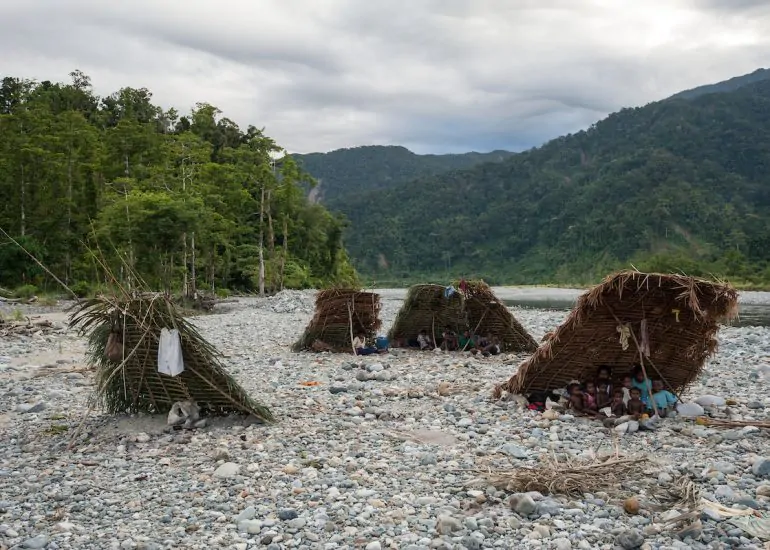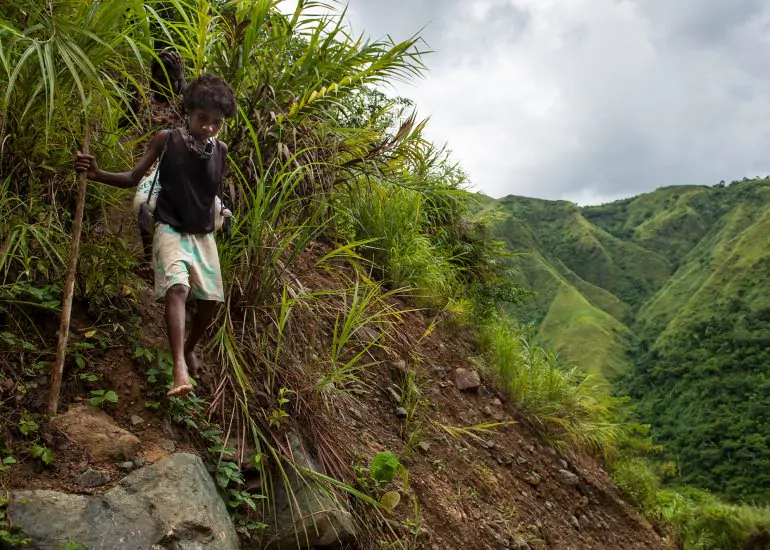earliest ancestors
earliest ancestors
The Aeta, also known as Negritos, are descended from the Australo-Melanesian peoples that were some of the earliest settlers of the Philippines, arriving some 40,000 years ago. There are various groups of Aeta scattered across the archipelago; mainly the Agta, Ati, Ayta, Mamanwa, and Batak. The picturesque plains of Central Luzon, watched over by the majestic Mount Pinatubo, has been the historic homeland of the Ayta people for millennia, long before they were converted large-scale agricultural lands by more recent settlers. When the great volcano erupted in 1991, the second-worst in world history, hundreds of thousands of Aytas were forced to evacuate; many of them have never been able to reclaim their ancestral lands, relocating in urban areas of Luzon and intermarrying with the other groups, like the Ilocanos in the north. In the Sierra Madre mountain range, rapid and continuing deforestation triggered an equally dramatic change in the culture and lifestyle of the Agta who are shifting from a predominantly hunter-gatherer lifestyle to a peasant livelihood dependent on a cash and barter economy. Still, many of the Agta groups remain semi-nomadic, moving from place to place depending on food security and the time of year. Historically, on Panay and Negros the Ati had the islands mostly to themselves, dwelling on the coasts and plains, where food supply was abundant. Later migrants of mostly Malay and Bruneian origin displaced the Ati, who retreated into the mountains, a common refrain in the indigenous story.
To read more about my time spent in some of these communities please see the following posts:
The Ati & Tumandok People of Panay Island
Back in the Sierra Madres with Our Agta Friends
The Agta & Dumagat of Isabela
email: [email protected] |
© 2025 Jacob Maentz